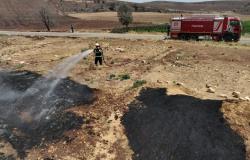Last Wednesday, June 5, 2024, the World Health Organization (WHO) announced the discovery of the first human case of avian flu caused by the H5N2 virus. Laboratory confirmed, this case was reported in Mexico. The person concerned died on April 24, but his death was “not attributable to the H5N2 virus”.
The WHO also announced “the first human case” confirmed in Australia linked to the H5N1 virus, which concerns a two and a half year old child hospitalized in intensive care but out of danger and whose exposure to the virus took place “probably in India “.
“Multifactorial” death
“This is a multifactorial death and not a death attributable to the H5N2 virus,” said a WHO spokesperson, Christian Lindmeier, during a press briefing on June 7, 2024 in Geneva.
According to the Mexican Ministry of Health, this 59-year-old man suffered from “chronic kidney disease, type 2 diabetes” and “long-term systemic high blood pressure”.
He had been bedridden for three weeks before the onset of acute symptoms, which manifested themselves on April 17 with fever, shortness of breath, diarrhea, nausea and general malaise, said the WHO, to which the case was reported. was notified on May 23. He was hospitalized in the Mexican capital on April 24 and died during the day.
“The patient arrived at the hospital after weeks of a multifactorial medical history,” he said. His body was then subjected to routine tests for influenza and other viruses, which detected H5N2.
“At this stage, as it is a multifactorial disease, it is a multifactorial death,” insisted Christian Lindmeier. No other cases have been detected among his contacts, in hospital or at his place of residence.
The H5N2 strain is different from that (H5N1) linked to the current epidemic in cows in the United States, and for which three human cases have been reported.
“Low” risk
“The H5N2 virus infection is under investigation to determine whether he was infected by a person during a visit or by previous contact with animals,” said the spokesperson for the H5N2 virus. WHO.
This death comes after the discovery in March of cases of H5N2 in farmed poultry in the state of Michoacan, which borders the State of Mexico where the victim lived. Other cases of H5N2 were subsequently identified the same month in poultry in Texcoco, in the state of Mexico, and in April in Temascalapa, in the same state.
“There is no risk for the population,” according to the Mexican Ministry of Health. The WHO deemed this risk “low”.
On June 6, Dr. Aspen Hammond of the WHO Global Influenza Program explained that it is too early to comment on the virus, saying that we should wait until we know its characteristics “and the provision of complete genetic sequence data”.
Concerning Australia’s first confirmed human case of H5N1, “exposure likely took place in India” where the virus was detected in birds in the past, according to the WHO. The child traveled to Kolkata from February 12 to 29, before returning to Australia on March 1 where she was hospitalized the next day in the state of Victoria (southeast). She is out of danger, according to the WHO, which adds that no member of her family has developed symptoms.
Strengthening the global detection network
The WHO called on Wednesday to strengthen the global detection network for H5N1, which has shown that it can infect a large number of animal species.
But no human-to-human infections have been recorded and the risk of contracting the virus for humans who eat infected animals is “negligible”, Markus Lipp, food safety expert at the Organization of United Nations Food and Agriculture Organization (FAO).
AFP






